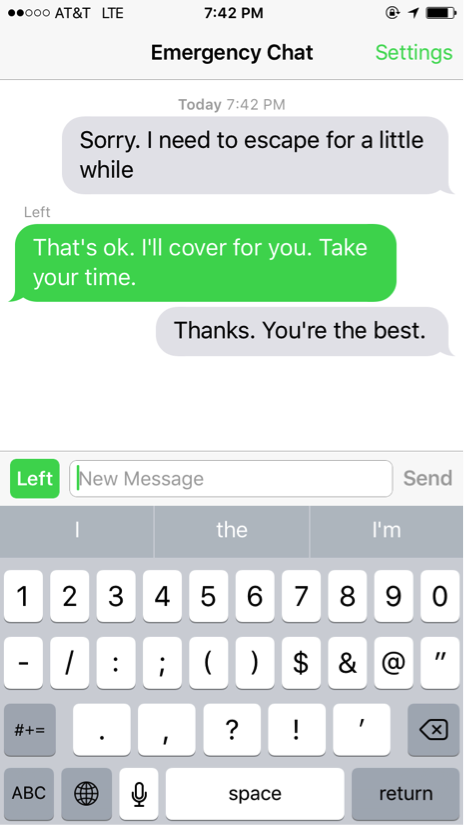Texting Can Actually Help People Who Shut Down: A Guest Blog by listener Paul S.
If you’ve ever been rendered non-verbal by any sort of meltdown, shutdown, or panic attack in the presence of other human beings, you know how the actions of well-meaning people can only make matters worse. I imagine that when a relatively normal person sees someone in visible distress, their instincts are to immediately try to comfort you, calm you down—by doing all the wrong things. People start asking you “What’s wrong?” and, when they get no verbal response, sometimes even become even more insistent. They may try to touch your shoulder. I’ve had people try to hug me (note: if you see someone having a meltdown/shutdown/panic attack, that is just about THE WORST thing you can possibly do). All you want to do is flee to a secluded little corner, maybe run to the next room, grab the pillows off the couch and hide behind it while rocking back and forth sucking your thumb, away from the sound and touch of anyone else so you can ride the waves of overwhelming dread until it subsides, but people want to help.
I know I can’t speak for everyone, but in these situations, as long as I can get sufficiently far enough away to be sure no one is following me, I can sometimes muster up enough strength to send a text to somebody, who by this point is probably quite alarmed at my strange behavior. If you know the person well, a few words is all it takes for them to understand you need to be left alone in peace for a little while.
If you don’t know the person quite as well, however, it takes way too much energy to explain what happened, so why bother?
There are a couple of ways I’ve found to get around that second scenario. One is to have a text template saved somewhere on your smartphone, explaining what is happening in your head and instructing them to be gentle, quiet, not to touch you and, if needed, help you find a place to escape to for a little while.
More recently, I’ve been using an app called Emergency Chat (Note: This is in no way meant to be an official, commercial endorsement of Emergency Chat. I have nothing to do with its developers or distributors. Besides, it’s free; how would they have the money to pay me anyway?), which you can get for free for Androids and iPhones. Upon opening the app, it displays a message, which you can customize. (sample screenshot of the one I wrote, slightly modified from the stock template that comes when you first use the app). It’s much faster than trying to find a text file on your phone, and an added bonus is that it actually acts as a sort of texting platform, i.e. you can even hand the phone back and forth exchanging typed messages with the other party without the need to actually speak.

I only jumped on the smartphone bandwagon a couple of years ago, and with all the mood trackers, medication reminders, and other apps like the one described above, it has drastically changed and improved the way I record, review, and analyze my moods and lifestyle, in ways that are surprising and often ingenious.



No Comments